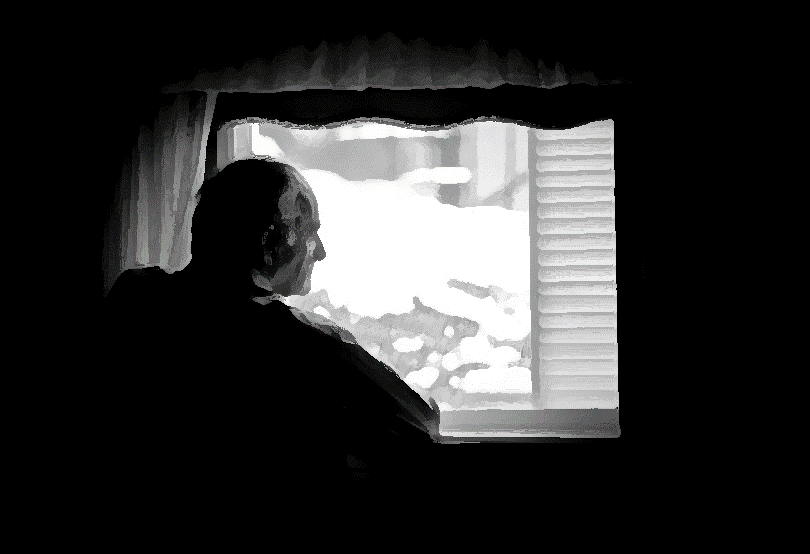
Having experienced the value of home-based palliative care (HBPC) and recognizing the challenges it faces as it grows, my elective in HPBC left me wondering what the future will hold for this field. As a hospice and palliative medicine fellow about to embark on my career as an attending, I feel fortunate to be able to stand on the shoulders of my mentors and the many other pioneers in palliative care who helped build the field. It is only because of their work that I am able to be in the privileged position to look out on the future of HBPC and wonder about all that could be possible, knowing that so much of the path has already been paved.
With that sense of excitement, I wanted to open a discussion about where HBPC may be headed and to think about how the next generation of palliative care clinicians can build off the work of our predecessors to continue to refine HBPC to create a more patient-centered and seamless system of care for our patients. To help me in thinking about this conversation, I asked two of my mentors at UCSF, Dr. Brook Calton and Dr. Christine Ritchie, to talk with me to get their unique perspectives about the future possibilities for HBPC.
To start us off, we thought about some of the proximal changes that are coming down the pipeline for HBPC. Changes in payment models, having already begun to sweep across health systems, will likely help expand access to HBPC. For example, legislation like California’s Senate Bill (SB) 1004, provides reimbursement for palliative care services for patients covered under Medi-Cal, the state’s Medicaid program.1 In some areas, this additional funding has led hospices to leverage their expertise in home-based care and move upstream to provide palliative care in the home.
The rise of alternate payment models, accountable care organizations, and an ongoing shift towards value-based care will also likely support ongoing growth and expansion of palliative care within health systems. As has been demonstrated in several studies, HBPC that leverages alternative payment models and value-based care can help align patient goals, quality outcomes, and costs.2,3

The science of providing HBPC is also likely to quickly evolve in the near future. Specifically, ongoing research in HBPC may help us refine how to better match programs’ intervention to patients’ needs. In particular, the Patient Centered Outcomes Research Institute (PCORI) launched a funding cycle in 2016 focused on community-based palliative care delivery for patients with advanced illness. Ultimately, they were able to secure $74 million for nine large trials that will likely help us refine how to provide the right care to the right patients in the right place at the right time.
Assuring high-quality, standardized HBPC is paramount.4 Advances in quality metrics and outcome measurement in HBPC is also likely to improve. An upcoming merger of the databases from the Palliative Care Quality Network (PCQN), the Center to Advance Palliative Care (CAPC), and the Quality Data Collection Tool (QDACT) may provide larger datasets for programs to use to better understand the current state of the field and begin to compare themselves to national benchmarks and successful peer programs. Some of this basic data may further help clinicians advocate for the resources needed to successfully implement these programs at their institutions.
The Joint Commission is now offering home health and hospice certification to provide community-based palliative care. This rigorous process will, to the extent possible, help ensure the quality of HBPC programs moving forward. Several payers looking to collaborate with HBPC programs are now requiring this certification to partner.
In the more distant future, I wonder about how the intersections between home-based primary care, home-based palliative care, and home hospice will interplay. Transdisciplinary teams that merge primary care, geriatrics, and palliative care may help to provide care that adapts to patients need throughout their life and optimally utilizes the skills of these unique but related specialties.
New demonstration projects are laying a groundwork for innovative models of care that allow palliative care to operate concurrently with cancer-directed treatment throughout the entirety of the life course.5 Especially in the evolving age of immunotherapy, such models of care may better meet patients’ needs compared to traditional hospice models, where patients most often must forgo cancer-directed therapy including experimental therapies and immunotherapy. Medicare is now working on demonstration projects to offer HBPC concurrently with disease-modifying therapy. If these demonstration projects are deemed successful, there ideally may come a time when hospice is no longer a distinct benefit and instead, patients care receive HBPC routinely throughout their illness to death, regardless of their treatment choices.
Demonstrating the potential feasibility of such models, a recent study of over 13,000 veterans receiving both hospice and more concurrent cancer-directed care led to less aggressive care and lower costs compared to individuals who had less exposure to hospice and concurrent care.6 Such findings suggests that even with expanded hospice and palliative care services that allow access to concurrent care does not necessarily lead to aggressive care at the end of life and higher costs.
Providing this type of palliative care from diagnosis to death may mean exciting changes in the way we build and hire for our palliative care teams. For example, such models would necessitate increased flexibility of providers to move between clinic- and home-based settings. Non-physician team members like social workers, nurses, and chaplains may come to follow cohorts of patients, regardless of setting, rather than being limited to a particular location.
As HBPC evolves and adapts to the changing environment of care, there will no doubt be new challenges that arise. However, I believe that the future remains incredibly bright and exciting for providing HBPC, and as I look out on the possibilities of the landscape in front of me, I am excited to dive in and work to innovate supported by the amazing groundwork beneath me.
Grant M. Smith, MD
Clinical Assistant Professor at Stanford University School of Medicine – Primary Care and Population Health
References:
1.Weiner S, Moorlach S, Mullin A. SB-1004 Mental Health Services Act: prevention and early intervention. SB-10042018.
2.Gomes B, Calanzani N, Curiale V, McCrone P, Higginson IJ. Effectiveness and cost-effectiveness of home palliative care services for adults with advanced illness and their caregivers. Cochrane Database Syst Rev 2013:CD007760.
3.Lustbader D, Mudra M, Romano C, et al. The Impact of a Home-Based Palliative Care Program in an Accountable Care Organization. J Palliat Med 2017;20:23-8.
4.Anne Calton B, Ritchie C. “Yes! We Have a Home-Based Palliative Care Program!”. J Am Geriatr Soc 2019;67:1113-4.
5.Haverhals LM, Manheim CE, Mor V, et al. The experience of providing hospice care concurrent with cancer treatment in the VA. Support Care Cancer 2019;27:1263-70.
6.Mor V, Wagner TH, Levy C, et al. Association of Expanded VA Hospice Care With Aggressive Care and Cost for Veterans With Advanced Lung Cancer. JAMA Oncol 2019.



